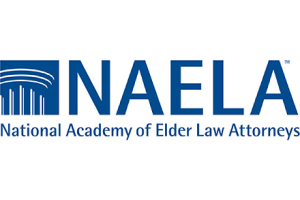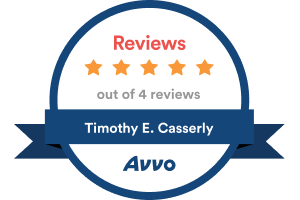Elder Law Frequently Asked Questions
Elder law attorneys focus on the unique legal needs of older adults and individuals with disabilities. Their expertise helps families plan for the challenges that often arise with aging, ensuring that clients’ legal, financial, and healthcare needs are addressed.
An Elder Law attorney’s knowledge of the unique needs of the senior population makes him or her better able to more thoroughly address the needs of their clients.
When planning the senior’s estate, an Elder Law attorney would take into consideration the health of the person/couple, the potential for nursing home care, the individualized financial circumstances and their wishes and concerns.
Elder Law covers all aspects of planning, counseling, education, and advocating for clients. Attorneys are a resource to their clients as they typically connect with local networks of professionals that serve the elder population and can provide recommendations for various services.
Planning opportunities for persons in crisis-persons newly admitted to, or about to be admitted to, a nursing home were thought to be scarce, or even nil. Burke & Casserly is proud to have been one of the pioneering law firms in the state to have identified, implemented, and successfully proven through litigation that last-minute planning was still possible. Our firm advocated strongly that a legitimate planning technique that coupled the use of a gift and a promissory note was permissible under the law. When the Applicant is receiving nursing home care but has done little or no prior long term care planning, Burke & Casserly can assist the Applicant and the family in securing eligibility for these Medicaid benefits, even when the Applicant has significant assets. Click this link for more information on The Promissory Gift/Loan Plan.
There are a variety of resources available to help provide care in the home. Many local nonprofits offer some assistance for those of limited means. Each county has a program to provide in-home care to seniors, provided certain eligibility criteria are met. In addition, the Veteran’s Administration also has programs to provide care. The most common mechanism for securing home care is through Medicaid. Just as Medicaid would pay for care in a nursing home, Medicaid can pay for care at home and can provide long term care services including the medical, social, housekeeping, or rehabilitation services a person needs over months or years in order to improve or maintain function or health at home. There are several options available through Medicaid for those over age 65, including the Nursing Home Transition and Diversion waiver program. However, the most common program for paying for home care is through Managed Long Term Care.
MLTC is system for delivering long-term services to persons who are disabled or chronically ill, but who wish to stay in their homes. Services may include home health aides and adult day programs. After a person is deemed financially eligible for MLTC by the County of the person’s residence, the person undergoes a screening to ensure the person actually requires the services. Then, the person is approved and must then enroll in a Managed Long Term Care plan. These plans are operated by either non-profit or for-profit insurance companies, who are paid a negotiated rate by New York State for each person enrolled in its plan. The types of services specifically available to an applicant depends upon the services offered by the MLTC Plan and depends upon the needs assessment that the Plan does prior to enrollment.
What are the housing options available to seniors in New York?
Retirement Communities
These communities are private homes or apartments, often governed by a homeowners association or membership committee, which limit residents to a certain age (often 55 and older.) It is a community of independent persons, and while often offering social activities, there are no services available and each owner is responsible for bringing in his or her own care if needed.
Senior Apartments
Senior apartments are either market rate apartments for persons of a specified age (often 60 and older) or can be subsidized housing for persons of limited financial means. Eligibility depends upon the type of federal and state subsidies given to the building. Each resident is to be independent, although assistance can be arranged by the individual resident if needed.
Independent Living Communities
These types of communities are also designed for independent persons who require little to no assistance with activities of daily life. However, many communities offer amenities like meals, transportation, and basic housekeeping for additional fees. Residents privately pay for their accommodations, and some communities have a significant up-front deposit required (often satisfied by the proceeds from the sale of the resident’s home) and then monthly costs. As the need for care increases, the residents are able to privately arrange for their own care to come in.
Assisted Living
In New York State, an Assisted Living Residence is a facility for seniors who require some assistance, but do not require a nursing home level of care. Housing, on-site monitoring, personal care services and/or home care services can be provided. What distinguishes the Assisted Living Residence from senior apartments is that the facility must provide 24 hour a day monitoring, and daily food service, along with an individualized service plan for each resident. Most accommodations are studios, although some do have one and two bedrooms. While the apartments do not have a full kitchen, meals are included in the cost and are served in a communal dining room. Like independent living communities, assisted living facilities have common areas or recreation centers where residents can socialize and engage in activities offered by the facility. Unlike independent living communities, assistance with the activities of daily living can be provided. In New York State, the majority of assisted living facilities are privately paid for, as Medicaid only pays for a very small percentage of assisted living rooms.
In New York there are 3 levels of assisted living:
Basic: Only need a limited amount of assistance with their activities of daily living, like dressing and bathing. Residents are still able to walk and transfer from a bed or chair by themselves. If a person requires hands-on care, it is likely that they are not able to reside in an Assisted Living Facility.
Enhanced: An Enhanced Assisted Living Facility allows a person to age in place. Once an assisted living resident’s needs progress, an Enhanced Assisted Living Facility enables a person in need of these services to remain:
- Are chronically chairfast and unable to transfer, or chronically require the physical assistance of another person to transfer;
- Chronically require the physical assistance of another person in order to walk;
- Chronically require the physical assistance of another person to climb or descend stairs;
- Are dependent on medical equipment and require more than intermittent or occasional assistance from medical personnel; or
- Have chronic unmanaged urinary or bowel incontinence.
Special Needs Assisted Living Residence: This type of Assisted Living Residence has secured an additional licensure, evidencing its dedication to and ability to care for those persons within a specific subset of residents with specific needs. Most often, those are persons with Alzheimer’s disease and other dementias. The license requires different staffing ratios, different services, and specialized training for staff. Because a Special Needs Assisted Living Residence is still an assisted living facility, the same limitations on the types of services that the facility can provide remain.
Nursing Home
Nursing homes, also known as skilled nursing facilities, provide around-the-clock skilled nursing care. A nursing home provides the highest level of care outside of a hospital setting providing assistance with activities of daily living, like dressing and bathing, along with medical care. Nurses or nurse’s aides are available 24 hours a day. Nursing homes can also provide physical or occupational therapy or other rehabilitative services. Residents in nursing homes may be privately paying or have the cost of their care paid for through Medicaid benefits. The team at Burke & Casserly can assist your loved one in securing eligibility for as well as applying for Medicaid benefits to help pay for the cost of care in a nursing home.
Alzheimer’s Disease and Memory Care Units
For seniors suffering with Alzheimer’s disease and other dementias, memory care units are often found in nursing homes. While a Special Needs Assisted Living Facility can provide care to one with memory impairments before the need for skilled nursing care arises, when the care level increases, it is important to inquire as to whether a skilled nursing facility has a dedicated memory care unit. Often times, a memory care unit is on a separate floor or occupies its own wing of the facility providing additional security for the resident’s safety.
Continuing Care Retirement Communities
There are currently 12 licensed Continuing Care Retirement Communities in New York State. In general, these are residential alternatives for adults that offer, under one contract, an independent living unit (an apartment or cottage), residential amenities and access to a continuum of long term care services, as residents’ health and social needs change over time. More information on these facilities can be found at Department of Health.
What is Respite?
Respite is defined as “a short period of rest or relief from something difficult” and in the long-term care setting, it is designed to give a short period of relief to the caregiver. Respite can come in many varieties – from having someone come into the house, to a temporary stay at a facility. Respite stays provide short-term or temporary care of a few hours or weeks to provide relief to the regular caregiver, who is usually a family member. A respite stay can also be a good way for someone to try a residential community before making a long term commitment. The cost of care at a facility is privately paid for by the resident.
What payment sources are at my disposal?
The phrase “Long-Term Care” typically includes care in the home or community based care, assisted living, memory care, and care in a skilled nursing facility. A study conducted by the U.S. Department of Health and Human Services predicts that more than 70% of Americans 65 and older will require Long-Term Care. Many people mistakenly believe that health insurance or Medicare will cover their long-term care costs. Medicare will, in certain circumstances, cover the cost of skilled nursing care but only for short term rehabilitation after the patient has been admitted as an inpatient to a hospital. Medicare will pay for no more than 100 days, although days 21-100 may have a significant co-pay and it is unusual for a person to be granted the entire 100 days consecutively. After Medicare benefits are terminated, the person is required to privately pay for care until such time as the person is eligible for Medicaid.
Medicaid will cover community based care and skilled nursing facility care, but only for people who meet the low income and asset criteria. Many people, therefore, must privately pay for their care. However, one’s savings can be depleted rather quickly paying for long-term care. According to the U.S. Department of Health and Human Services, by 2017, the average annual rate for home health aides in the Capital District will be $55,638, assisted living will cost an average of $63,600 annually in 2025, and a semi-private room in a nursing home will be on average $159,000+ per year in 2025. There are a number of ways to pay for long-term care. These include savings, retirement income, investment income, long-term care insurance, Veterans Benefits, and Medicaid. There is a lot than can be accomplished with proper planning for future costs. When meeting with a Burke & Casserly Elder Law attorney, we will discuss all of the options that may be available, and developing a plan to cover the future costs of long-term care.









